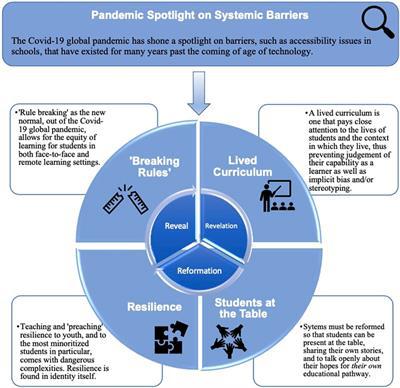When K-12 educators were first introduced to the concept of providing every student with access to an electronic device in the classroom a quarter century ago, the idea was met with intrigue by some and absolute horror by others.
Fast forward 25 years and “1-to-1" computing programs have become commonplace. After being introduced in K-12 schools during the late 1990s, this trend has seen steady growth ever since. In 2013 and 2014 alone, schools nationwide purchased more than 23 million digital devices—laptops, tablets, and Chromebooks—for use in the classroom.
By March of 2020, when the pandemic closed schools across the nation indefinitely, districts with pre-existing 1-to-1 programs held an advantage over those that scrambled to locate and distribute devices to students at home. But, as the lengthy pandemic school shutdown proved, simply putting devices into the hands of students doesn’t automatically translate into academic advantages.
Educators have learned that dependable infrastructure, a strong pedagogical vision regarding the educational role of devices, and relevant professional development all play key roles in forming the foundation of an effective 1-to-1 program.
Education Week recently posed a series of questions about 1-to-1 computing to Sally Adams, a technology facilitator for California’s Desert Sands Unified School District. Here’s what she had to say.
This interview has been edited for brevity and clarity.
Take us back. When did you first see 1-to-1 computing programs emerging?
For Desert Sands Unified School District, the Bring Your Own Device (BYOD) initiative began in the fall of 2012. This was the first step toward providing a 1-to-1 [computing] environment for all students. The full implementation of the district providing a device (Chromebook or tablet) for all students was fulfilled in the 2014–2015 school year. The devices were stored in classroom charging carts for the students to use during class time, and then returned to the cart prior to moving to their next class. We then began checking out devices for students to take home at the middle and high school levels in the 2017–2018 school year, with all students issued their own device at the start of the pandemic.

Why was getting a device in every student’s hands necessary?
The rationale behind providing devices for students was to provide anytime, anywhere access to education. Schools were looking for a way to bring the wealth of the internet—research, communication, collaboration—to each student’s fingertips at any time of the day.
Has the goal of 1-to-1 computing programs changed over time?
Absolutely, the goal has changed. Initially the focus was to give students access to further their learning beyond concentrated “tech time.” As time went by, the devices became a tool that was necessary for students to access their education: textbooks, creation tools through what is now referred to as Google Workspace, collaboration with teachers and students via Google Classroom, and extended learning time.
Ideally, what does this ready access to digital devices allow teachers and students to do?
It allows students to take more ownership of their learning by having access to materials and resources outside of the traditional school day. Teachers are able to “flip” their classrooms, if they choose, to allow for more flexibility during class time.
What are the risks, or possible negative consequences, of adopting a 1-to-1 device program?
Data privacy and security are always concerns; parents require guidance on setting limits for access in the home. With possible unsupervised access, the need for web filtering that mimics in-class filtering was crucial. Email and Drive monitoring is necessary (via Gaggle for us) to help keep students safe.
What can school districts do to make 1-to-1 computing environments effective?
Through the combination of a learning management system, digital textbooks, content creation tools, and curated resources, a school district can provide robust programs for students via digital devices. It does require a philosophy that technology is a tool in the full spectrum of the educational toolbox. It’s not a fix or single answer for the problem of student engagement.
Training teachers in concepts such as blended learning and universal design for learning (UDL) helps transition and provide balance. Ongoing professional development in using the tools and in digital citizenship are critical.
What about concerns that students are spending too much time staring at computer screens?
I think that setting balance with anything is necessary. As we find ourselves needing to engage in a digital world for both personal and professional/school settings, creating space apart from these devices is critical. Screen time when used for the right purposes is beneficial but too much of anything can be detrimental.
Has the increasing use of devices translated into a greater awareness of how best to use them in educational settings?
In some ways, the requirements for engaging online have created communities for teachers and students to work together. However, simply using a device to engage with classroom content may not be the most effective use of classroom instruction. If anything, I think we’ve learned about the need and value of face-to-face instruction and collaboration to balance electronic engagement. We need both to facilitate well-rounded learning experiences.
Fast forward 20 years. How do you think the role of laptops, tablets, and other digital devices in education will have changed?
As we learn more about individual learning styles, I think we will see a broader spectrum of options for students with regard to their educational opportunities. I think a combination of virtual and face-to-face learning will become more common as we learn to leverage the power of these digital devices.




